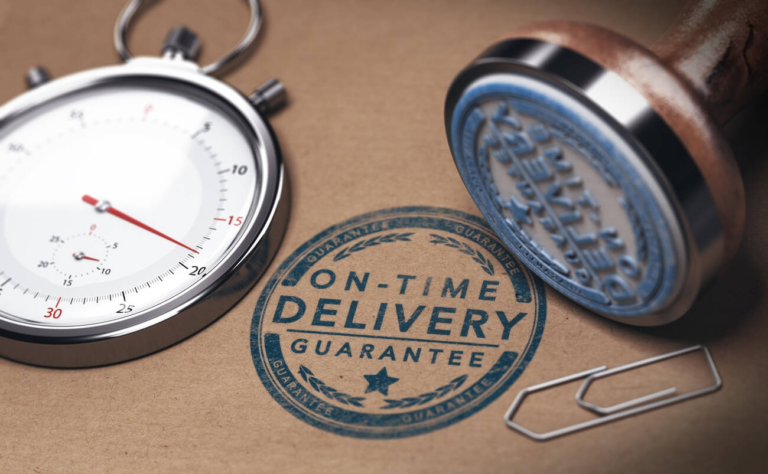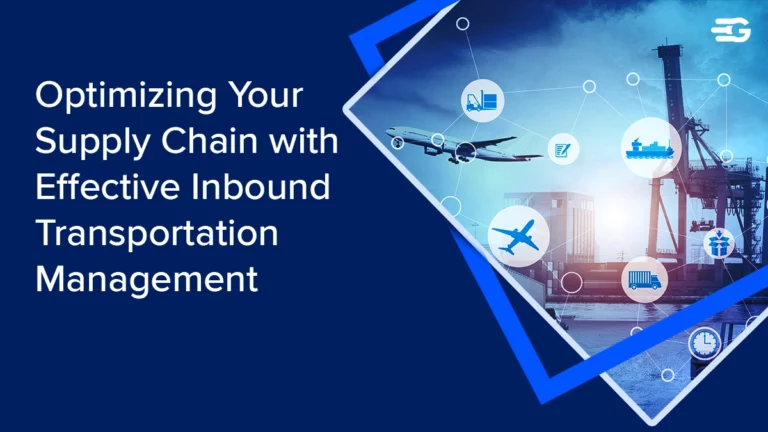LIFO Method: Understanding Last-In, First-Out in Inventory
The cost of your inventory has a significant influence on your budgeting and overall profitability. Businesses constantly work to sell excess goods, but a surprising amount inevitably goes to waste. According to a report by materials supplier Avery Dennison, a staggering 8% of surplus stock globally translates to roughly $163 billion worth of inventory being discarded annually. This highlights the importance of optimizing inventory management practices.
One key to optimizing inventory management is understanding different inventory accounting methods. The LIFO method (Last-In, First-Out) is one such method that can significantly impact your business’s cost of goods sold (COGS) and ultimately, your bottom line. Let’s delve deeper into how LIFO works and how it can benefit your business.
What is LIFO?
LIFO stands for Last-In, First-Out. This method assumes that the products in your inventory flow in a certain way, with the most recent acquisitions being the first to be sold. To put it another way, picture a pile of boxes. When using LIFO method, you would take the box that was just placed on top of the others rather than the one at the bottom.
This LIFO method concept applies to the cost of your inventory as well. When a sale occurs, the cost associated with the most recently acquired items is used to calculate the cost of goods sold (COGS). This means that older inventory with potentially lower costs remains on the books, while the most up-to-date costs are reflected in your COGS. The implication of this is that LIFO can be particularly relevant in times of rising prices, as it can lead to a lower COGS and potentially a higher reported profit. We’ll explore the advantages and disadvantages of LIFO in more detail later.
LIFO’s Application and Relevance
Understanding LIFO’s application is a critical next step after grasping the idea. Not all business situations lend themselves to LIFO method. We can discover how and when LIFO method works best for your business by investigating these areas. We’ll discuss when LIFO’s ‘last-in, first-out’ technique can be especially helpful in the sections that follow, along with some things to think about before incorporating it into your personal inventory management plan.
When Does LIFO Take the Lead
Although not always the best approach, LIFO method works well in some situations. Here are some situations in which LIFO might benefit your company greatly:
Non-Perishable items: Industries that deal with non-perishable items, including canned food, cleaning supplies, or specific kinds of clothes, are especially well-suited for LIFO method. The presumption that the most recently acquired things being sold first is frequently accurate because these items don’t have expiration dates.
Click here to know more about POD which is a critical document for the shipment of such items- ‘What is Proof of Delivery (POD)’
Inflationary Times: LIFO might be a tactical benefit while prices are rising. Let’s say you used to pay $10 for each widget, but this year they cost $15. When using LIFO, COGS is determined using the cost of the more costly, recently acquired widgets. Because of this, your COGS rises, lowering your taxable income.
Deflationary Periods (Limited Use): Although less frequent, LIFO method might be helpful during deflationary periods, when prices are typically declining. Here, though, the benefit is not as great. The higher expenses of older inventory will be the basis for COGS, which could result in a lower reported profit and less tax benefits.
It’s crucial to remember that adopting LIFO method has tax implications and should be carefully considered in consultation with your accountant to make sure it supports your overall business objectives.
Learn more about how third part vendors store their products in Amazon fulfillment centers and sell without maintaining inventory through our blog- ‘What is FBA? Shipping to Amazon FBA and selling without inventory.’
The Benefits and Drawbacks of LIFO
It is essential to select the best inventory accounting technique for precise financial reporting and tax optimisation. With its ‘last-in, first-out’ methodology, LIFO method has both clear benefits and cons. By looking at all sides of the issue, you will be better equipped to decide whether LIFO method fits the unique requirements of your business and advances your financial objectives.
Weighing the Pros and Cons
Like any accounting method, LIFO method has its own set of benefits and drawbacks. Knowing these will help you determine whether LIFO is the best option for your company.
Benefits
Tax Advantages: LIFO can save taxes during inflationary times by increasing your COGS (cost of goods sold) and reducing your taxable income. This can reduce tax obligations and potentially free up cash flow for your company.
Profit Smoothing: LIFO can provide a more consistent view of your profits over time. In inflationary times, COGS will increase, possibly offsetting rising sales prices and resulting in a more stable profit margin.
Drawbacks:
Misrepresentation of Inventory Value: The value shown on the balance sheet may not accurately reflect current market prices because LIFO ends inventory using earlier costs. When creditors and investors are attempting to determine the actual financial health of your business, this could be deceiving.
Complexity & Recordkeeping: Compared to FIFO (First-In, First-Out), LIFO may be more difficult to construct and manage. To efficiently maintain inventory tiers, you’ll need a strong recordkeeping system, which will increase your accounting expenses.
Limited Applicability: Not every firm is a good fit for LIFO. In situations where you handle perishable commodities or frequently see price variations, LIFO method may not be an accurate representation of your inventory movement. Furthermore, there are limitations in several nations regarding the use of LIFO method for taxation.
Impact on Profit Reporting and Taxes:
The effect of LIFO method on taxes and profits is dependent on inflation. Because of a higher COGS during inflation, LIFO may result in lower reported profits. Nonetheless, this results in reduced tax obligations, providing a monetary advantage. The converse happens during deflationary times, which may result in larger reported earnings and higher tax loads.
LIFO vs. FIFO: The Great Debate
It can be very difficult for businesses to choose the best inventory accounting method. One major debate centers around LIFO method (Last-In, First-Out) versus FIFO (First-In, First-Out). It is important to understand the key differences between these two approaches because even small differences can have a big impact on your financial statements, tax obligations, and overall business strategy.
Difference Between LIFO and FIFO
| Feature | LIFO (Last-In, First-Out) | FIFO (First-In, First-Out) |
| Inventory Flow Assumption | Most recently acquired items are sold first | Oldest inventory items are sold first |
| Impact on COGS (Cost of Goods Sold) | Higher COGS in inflationary periods (uses more expensive, recent costs) | Lower COGS in inflationary periods (uses older, lower costs) |
| Impact on Profit | Lower reported profits in inflationary periods (potentially lower taxes) | Higher reported profits in inflationary periods (potentially higher taxes) |
| Impact on Inventory Valuation | Ending inventory value may not reflect current market prices | Ending inventory value typically reflects current market prices more closely |
| Complexity | More complex to implement and maintain due to recordkeeping for inventory layers | Generally simpler to implement and maintain |
| Suitability for Industry | Ideal for non-perishable goods (e.g., canned food items) | Ideal for perishable goods or frequent price fluctuations |
| Financial Reporting | May provide more stable profit margins during inflation | Offers a more current picture of inventory value |
Choosing the Right Method for Your Business
Compare and contrast LIFO with FIFO, providing insights into factors that influence the choice between the two methods for businesses.
For organizations, deciding between the LIFO (last-in, first-out) and FIFO (first-in, first-out) inventory accounting methods is essential. Selecting one of these approaches can have a big influence on operational effectiveness, tax obligations, and financial reporting. Making an informed choice that supports the objectives of your business requires an understanding of the factors that affect this decision.
Industry: The suitability of LIFO or FIFO depends in large part on the industry in which your business operates. Industries that deal with non-perishable commodities, like cleaning supplies or canned food, usually find success using LIFO. The ‘last-in, first-out’ rule frequently corresponds with the realities of inventory management in these sectors. However, firms that deal with perishable goods or have a lot of price changes, like grocery stores or fashion retailers, are better suited for FIFO.
Tax Implications: An important consideration in the decision-making process is the tax implications. Potential tax benefits are provided by LIFO during inflationary times. A lower taxable income and maybe fewer tax obligations result from increasing the cost of goods sold (COGS) when ending inventory is valued at lower, older costs. To comprehend the precise tax ramifications for your company and adhere to national laws, you must, nevertheless, speak with your accountant.
Financial Reporting: Considerations for financial reporting are still another crucial element. As COGS tends to be larger and may prevent rising sales prices, LIFO method may produce more consistent profit margins during inflation. But it’s possible that the closing inventory value does not fairly represent current market pricing. FIFO, on the other hand, gives a more up-to-date view of inventory value on the balance sheet. However, during times of inflation or deflation, reported earnings may vary more noticeably.
Complexity: Another thing to take into account is complexity. Because inventory layers have distinct costs, LIFO method might be more difficult to establish and manage. This intricacy may lead to higher accounting expenses and more thorough recordkeeping. In contrast, FIFO requires less recordkeeping than LIFO and is often easier to deploy and maintain.
There is no one-size-fits-all method for choosing between LIFO and FIFO. It’s critical to thoroughly consider each of these elements like industry norms, anticipated pricing trends, intended tax advantages, the significance of accurate financial reporting, and the availability of accounting resources in the context of your business. It is strongly advised that you speak with your accountant. They can assist you in navigating the complexities of LIFO and FIFO and take into account the particulars of your company as well as your financial objectives. And by making an informed decision, you can derive the full potential of your chosen inventory accounting method.






